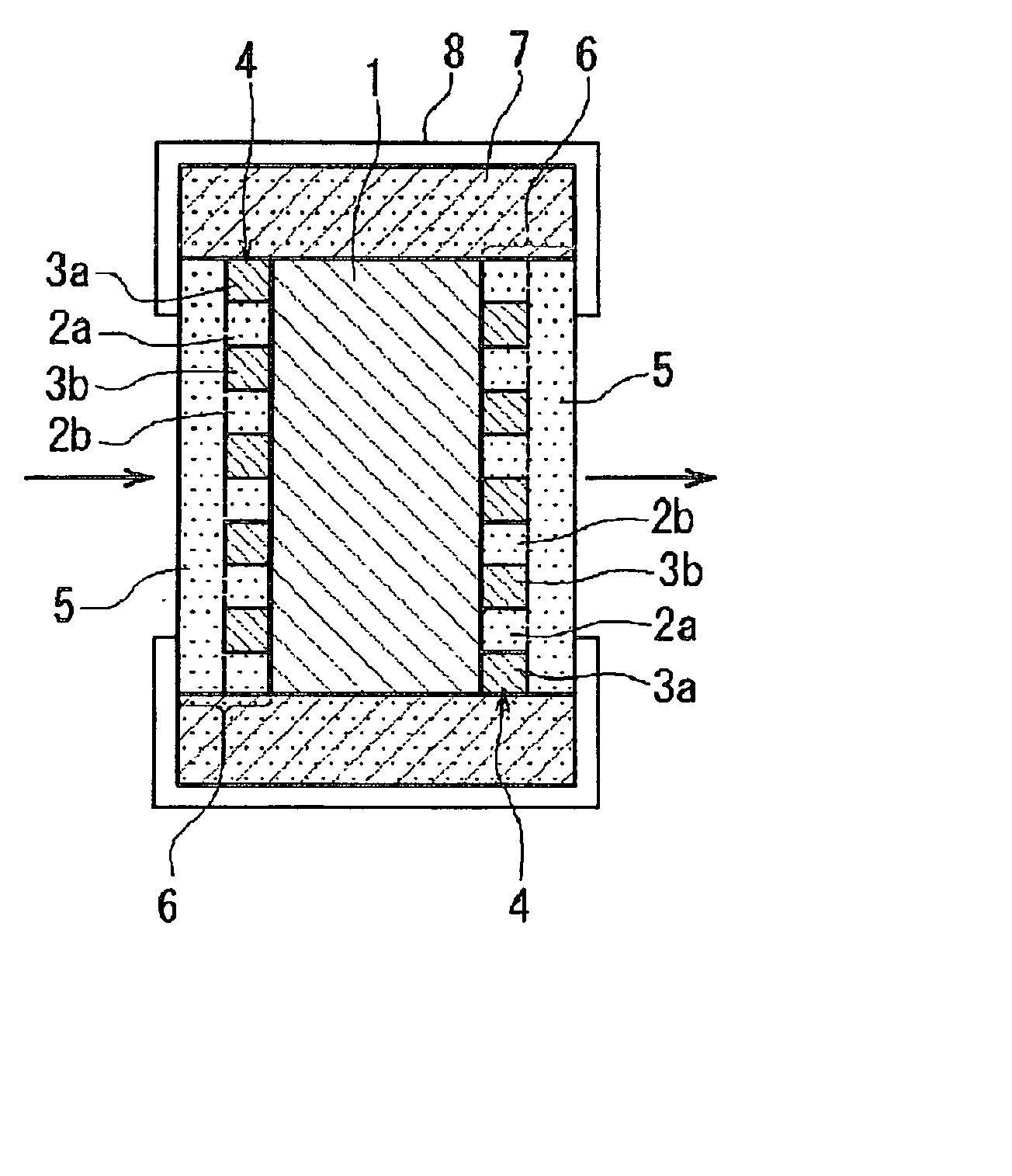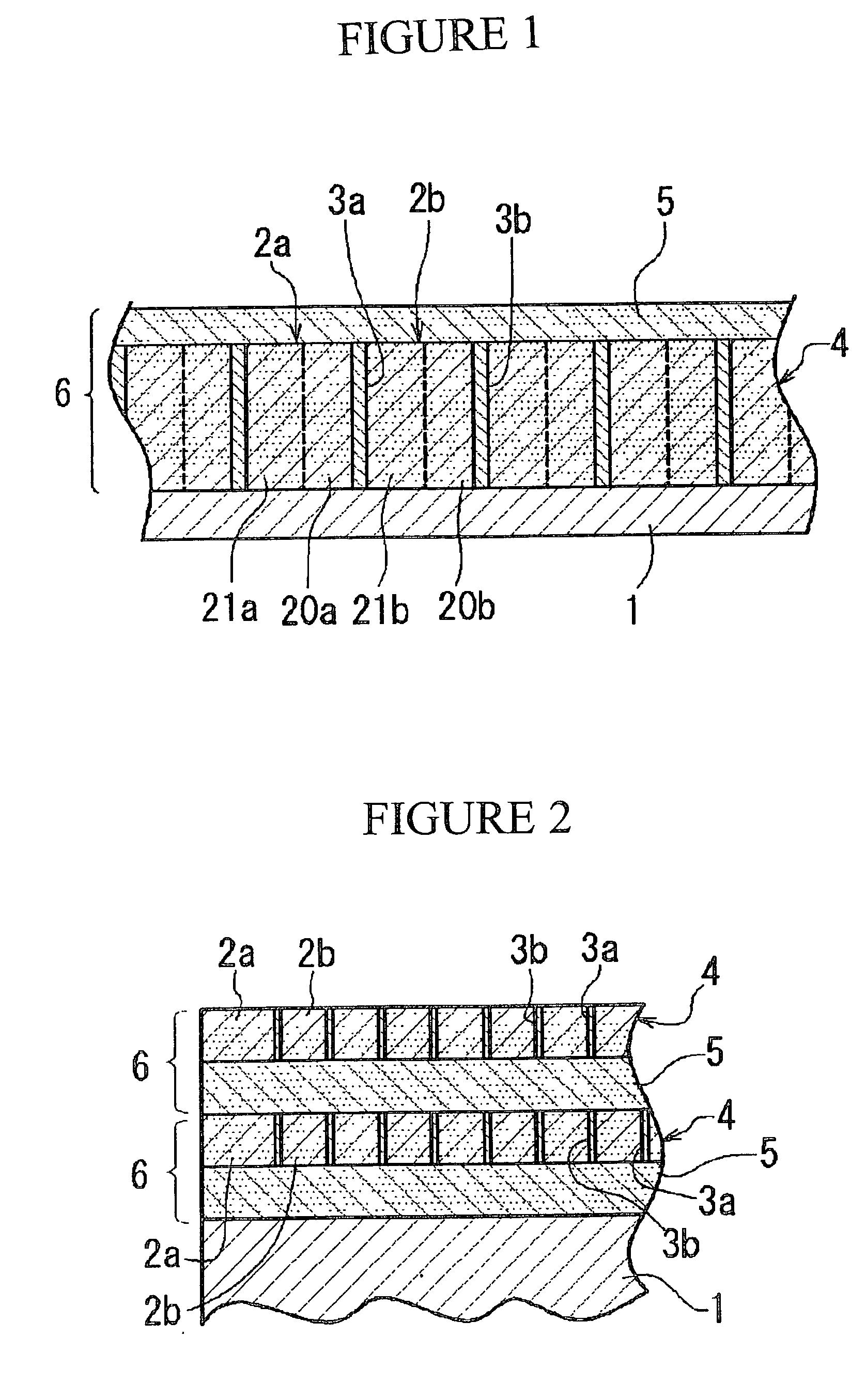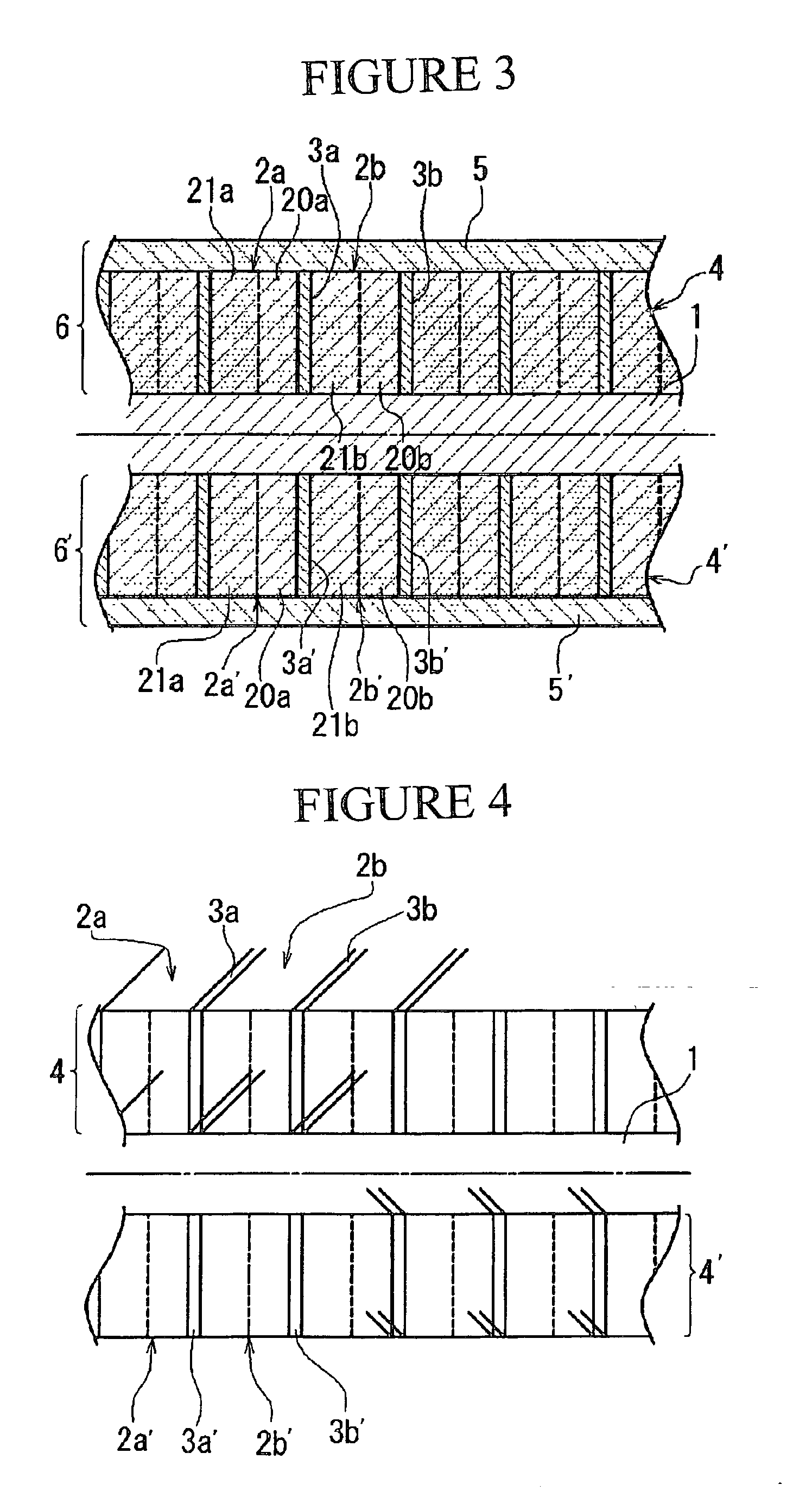Polarizing function element, optical isolator, laser diode module and method of producing polarizing function element
a technology of polarizing function and laser diode module, which is applied in the direction of polarizing elements, instruments, coatings, etc., can solve the problems of limiting the possibility of miniaturization, raising the product cost of optical isolators, and problems in the manufacture or the properties of these elements with polarizing functions
- Summary
- Abstract
- Description
- Claims
- Application Information
AI Technical Summary
Benefits of technology
Problems solved by technology
Method used
Image
Examples
Embodiment Construction
[0016] This invention has a polarizing portion with a striped structure formed by multiple alternating light-transmissive dielectric layers and metallic film layers, which has both the polarizing function of polarizing an input beam and a non-reflecting function of suppressing reflection of the input beam, and is formed at least on one side of a light-transmissive substrate. By integrating the polarizing portion, as the polarizing and non-reflective film, with the light transmissive substrate in this way, it is possible to have the polarizing and non-reflective film and the substrate in a strong, integrated structure, and to have superior performance including light-transmissivity and polarization.
[0017] It is also possible to improve the performance as a polarizing function element and increase the polarization / extinction ratio by forming a polarizing portion or stacked portion on both sides of the light-transmissive substrate.
[0018] It is preferable that the metallic film layers b...
PUM
| Property | Measurement | Unit |
|---|---|---|
| Fraction | aaaaa | aaaaa |
| Thickness | aaaaa | aaaaa |
| Sound / signal amplitude | aaaaa | aaaaa |
Abstract
Description
Claims
Application Information
 Login to View More
Login to View More - R&D
- Intellectual Property
- Life Sciences
- Materials
- Tech Scout
- Unparalleled Data Quality
- Higher Quality Content
- 60% Fewer Hallucinations
Browse by: Latest US Patents, China's latest patents, Technical Efficacy Thesaurus, Application Domain, Technology Topic, Popular Technical Reports.
© 2025 PatSnap. All rights reserved.Legal|Privacy policy|Modern Slavery Act Transparency Statement|Sitemap|About US| Contact US: help@patsnap.com



